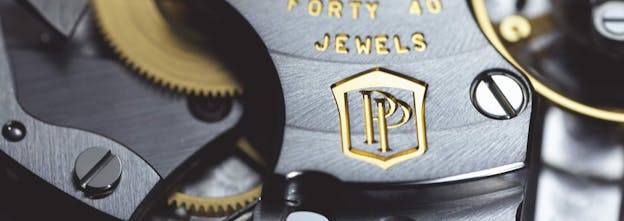Deep in the Certification Jungle
Are you a QF sort of a person? Or does METAS, PP seal, Geneva seal, Viper’s Head seal, ISO, or COSC do it for you? That may seem an odd question, but it’s an important one in the world of certification. Certifications are supposed to mean our watches are more precise, more beautiful, or more robust. Let’s take a closer look.
Once upon a time, there was just one international organization claiming to address the need for standardization in most trades, including watchmaking: the International Organization for Standardization, better known by its abbreviation, ISO. Watchmaking uses ISO’s benchmark standards, in particular for everything relating to diving watches.
However, marketing sometimes calls for other tricks. For example, some brands have created their own certifications, supposedly to guarantee that little extra in terms of accuracy, finishings, or endurance for their own timepieces.
In theory, some of these standards are completely open, meaning they can be adopted by any other brand. In actual fact, each defends its own territory – one which it is very difficult for others to penetrate. Among the certifications that have recently made watchmaking headlines is METAS. This is actually the acronym for Switzerland’s Federal Institute of Metrology: rather than being a standard as such, it is in fact a Swiss public-law entity.
Master Chronometer, Omega’s preserve
Omega has enlisted METAS to certify its most technical timepieces, capable of withstanding very strong magnetic fields (15,000 Gauss). Through a subtle semantic shift, METAS is thus frequently referred to as though it is a form of certification, virtually a standard, whereas in fact it originally refers to an institute. The organization’s expertise served as the basis for Omega’s own in-house standard, known as Master Chronometer.

The Rolex “superlative” certification

The Master Chronometer certification is something of a retort to Rolex’s own in-house certification, known as Superlative Chronometer, another brand-specific standard. Rolex self-certifies that many aspects of its pieces have been developed and optimised so as to be as accurate as possible. The developments relate mainly to the escapement and related materials.

From standard to seal: Patek Philippe

Geneva’s Patek Philippe was perhaps one of the first manufactures to develop in-house certification. By creating its own Patek Philippe seal, the brand sought to certify a specific degree of both precision and finishing – although here again, this is purely self-certification, first developed in 2009 and bringing to an end 122 years of collaboration with the Geneva Seal. The Manufacture’s goal was to break free from criteria that revolved mainly around the geographical origin of the brand, taking the view that its own requirements were more stringent. Today, in addition to the movement itself, the Patek Philippe Seal covers the case, dial, hands, pushers, and other components. What is more, the accuracy of each watch must be between -3 and +2 seconds for calibers larger than 20 millimeters, or -5 to +4 seconds for watches smaller than 20 millimeters in diameter. Tourbillon movements must have an accuracy of between -2 and +1 seconds over 24 hours.

Geneva Seal: the patriarch

Nevertheless, the Geneva Seal is still going strong. Many firms regularly use it, Vacheron Constantin and Roger Dubuis among them. Its legitimacy derives from its seniority: it was founded in 1886. It too certifies a range of variables on each individual watch, including geographical origin, the quality of the finishings, reliability, and of course certified Geneva origin.

COSC: the must-have certificate

Accuracy has given rise to more certifications than any other criteria, and COSC is the best-known in the field. COSC stands for Contrôle Officiel Suisse des Chronomètres, the Official Swiss Chronometer Testing Institute. Founded in 1973 and based in Chaux-de-Fonds, COSC is a non-profit public-interest organization serving the Swiss watchmaking industry.
Its renowned bulletin states that one of the ‘chronometer’ certification criteria is that the average daily rate for the first ten days controlled must be between -4 and +6 secs, i.e., no more than 10 seconds per day. This level of certification is actually based on an ISO standard, and is not specific to COSC; the Viper’s Head Seal developed by the Besançon Observatory provides stringent certification of the same degree of accuracy. It is to be found on certain Kari Voutilainen watches, for instance; for its part, COSC is in much more widespread use, covering virtually all Breitlings as well as many other timepieces.

Fleurier Quality: the local initiative
The extremely demanding Fleurier Quality Label certifies both the movement and the finished watch, statically and in conditions that simulate it being worn on the wrist. In addition to COSC certification, this requires many other boxes to be ticked, including passing Chronofiable tests and 100% Swiss origin certification. Chopard is currently the manufacture that submits the most watches in the world for the label – a total of just over 1000 watches spanning seven different models in the space of 10 years.


